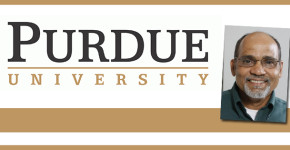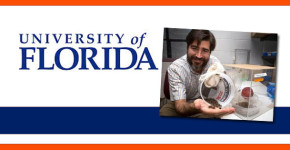Category: Biology
-

David Kaplan, Tufts University – Silk Medical Improvements
Metallic screws and plates have long been used in reconstructive medical procedures. Dr. David Kaplan, professor of biomedical engineering at Tufts University, touts the potential benefit of replacing metal with silk in these surgeries. David Kaplan holds an Endowed Chair, the Stern Family Professor of Engineering, at Tufts University. He is Professor & Chair…
-

Arun Bhunia, Purdue University – Better Salmonella Detection
Salmonella outbreaks can be devastating. To reduce this danger, Arun Bhunia, professor of food microbiology at Purdue University, is working on new techniques and technology that will more quickly identify the infectious strain Dr. Arun Bhunia is a professor of food microbiology at Purdue University. His research focuses on pathogen detection and mechanism of pathogenesis.…
-

Daniel Hahn, University of Florida – “Sexy” Fruit Flies
Apparently, you can sterilize flies too well. In today’s Academic Minute, Daniel Hahn, assistant professor in the University of Florida’s department of entomology and nematology, discusses a new and improved fly sterilization methodology. Dr. Daniel Hahn is an assistant professor in the University of Florida’s department of entomology and nematology. He is broadly interested in…
-

Susan Kalisz, University of Pittsburgh – Recipe for Invasive Plant Species
Species interaction dictates a great deal of a location’s biodiversity. Susan Kalisz, professor of biology at the University of Pittsburgh, is linking the diet of deer to the success of the animals’ surrounding flora. Susan Kalisz is a professor of biological sciences at the University of Pittsburgh. She received her Bachelor’s degree from the University…
-

Phillip Sponenberg, Virginia Tech – Fainting Goats
The Latin name myotonia congenitamight not mean much to you, but you’ve likely seen them in action. Dr. Phillip Sponenberg, professor of pathology and genetics at the Virginia-Maryland Regional College of Veterinary Medicine at Virginia Tech, fills us in on one of the internet’s favorite animal oddities: the fainting goat. Dr. Phillip Sponenberg is a professor…
-

Yehuda Ben-Shahar, Washington University in St. Louis – RNA Messengers
RNA seems like the unsung little brother of DNA and protein. But Yehuda Ben-Shahar, assistant professor of biology at Washington University in St. Louis, is learning a great deal about their very important molecular responsibilities. Dr. Yehuda Ben-Shahar is an assistant professor of biology at Washington University in St. Louis. His research focuses on the…
-

Lee Newman, SUNY ESF – Using Plants to Address Environmental Issues
The Fukushima Daiichi nuclear disaster is having significant consequences on our environment. Dr. Lee Newman, associate professor at the State University of New York’s College of Environment Science and Forestry, discusses phytoremediation as a potential clean-up method. Dr. Lee Newman is an associate professor at the State University of New York’s College of Environmental Science and Forestry.…
-

Marco Bisoffi, Chapman University – Thinking Outside the Tumor
Studying the area surrounding a cancerous tumor may provide new medical insights. Dr. Marco Bisoffi, associate professor of biological sciences at Chapman University, is studying field cancerizationto help treat the deadly disease. Dr. Marco Bisoffi is an associate professor of biological sciences in the Schmid College of Science and Technology at Chapman University. He earned his PhD…
-

Anne Murphy, Georgia State University – Infant and Adult Pain Response
Does the pain felt by an infant affect them later in life? Anne Murphy, associate professor of neuroscience at George State University, is observing the relationship between pain felt as an infant and the related long-term effects. Dr. Anne Murphy is an associate professor and the associate director of the Neuroscience Institute at Georgia State…
-

John Roe, University of North Carolina Pembrooke – Declining Leatherback Turtle Population
The leatherback turtle population is getting some much needed help. Dr. John Roe, assistant professor of biology at the University of North Carolina at Pembroke, is tracking, studying and helping to develop strategies that will help to revitalize the leatherback population. Dr. John Roe is an assistant professor in the University of North Carolina at…
